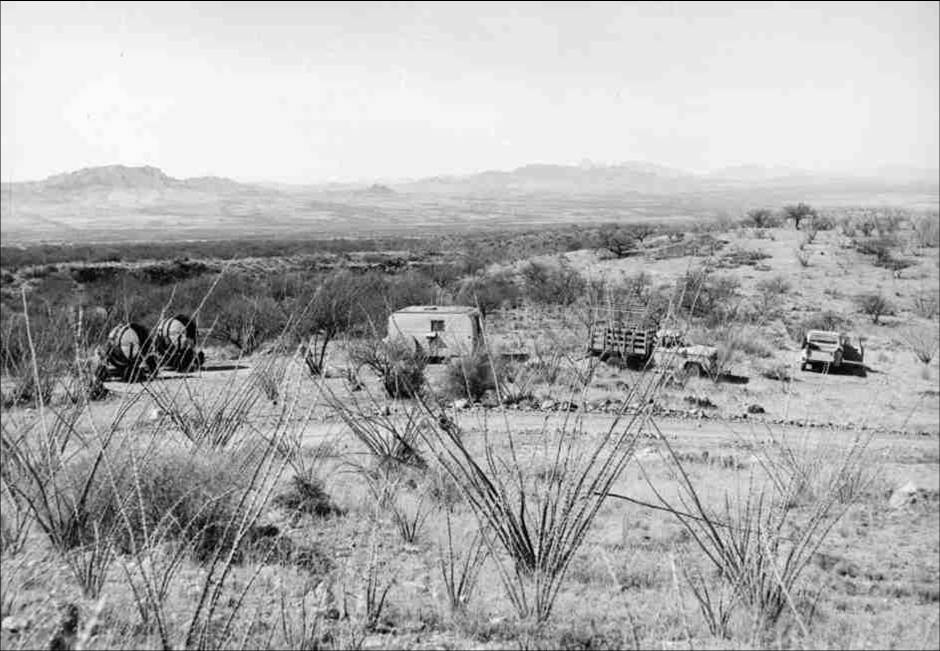November 2013: At the recent "Trevorfest", a number of talks about the early development of VHE gamma-ray astronomy were presented. See them here.
A brief timeline of the development of ground-based gamma-ray astronomy through the Whipple and VERITAS projects:
-
1953 Jelly and Galbraith: Cherenkov emission from atmospheric showers of charged particles is discovered.
-
1958 Morrison publishes "On Gamma-ray Astronomy"
-
1958 Chudakov and Nesterova: Development of the first large-scale instrument for TeV Gamma-ray astronomy, in the Crimea.
-
1961 Hill and Porter: Successful imaging of Cherenkov light from a 1015 eV hadronic shower, using an image-intensifier with phosphor storage.
-
1963 Jelley and Porter: Publication of "Cherenkov Radiation from the night sky and its application to Gamma-ray Astronomy", suggesting the use of image shapes to select gamma rays and initiating a decade of collaborative work, with facilities operated at Harwell (UK) and Glencullen (Ireland).

-
1966-68 Fazio and Weekes: Installation of SAO's Whipple 10m telescope at Mt. Hopkins; first purpose-built large reflector for TeV Gamma-ray Astronomy
-
1968-76 Upper limits reported on many prominent sources
-
1976-82 Whipple/SAO gamma-ray program closed down; TeV Gamma-ray astronomy enters the "Dark Ages"'
-
1977 Turver and Weekes: In "Gamma-Ray Astronomy from 10-100 GeV", suggest use of PMT camera to record images, laying the groundwork for image analysis for gamma-hadron separation.
-
1978 Porter and Weekes: Upper limits on density of primordial black hole explosions reported (using optical searchlights as light collectors).
-
1979 Weekes and Fegan: Evaluate the potential of the National Solar Thermal Test Facility (NSTTF) at Sandia National Laboratories, as an optical detector of Cherenkov radiation
-
1980-82 Weekes, Fegan, and Porter: construct an imaging system for implementation on the 10m Whipple telescope
-
1982 Whipple Collaboration formally constituted (Hawaii, Iowa State, SAO, U.C. Dublin, Durham)
-
1984 Imaging camera (37 pixel) installed on Whipple telescope
-
1985 "VERITAS concept" proposed in Space Station Workshop at LSU
-
1985 'Image-enhanced' detection of TeV gamma rays from the Crab Nebula reported at the 19th ICRC meeting in San Diego
-
1989 Publication of detection of first galactic source by Whipple: the Crab Nebula
-
1992 Detection of first extragalactic source by Whipple: Markarian 421
-
1996 Internal proposal for VERITAS construction presented to SAO
-
1998 VERITAS approved by SAO
-
2000 VERITAS Collaboration formed (Chicago, Iowa State, Kansas State, Leeds, Purdue, SAO, U.C. Dublin, UCLA, Washington U.)
-
2002 VERITAS proposal presented to NSF and DOE
-
2003 Four telescope version of VERITAS approved by DOE, NSF and SAO.
-
2007 First Light with VERITAS; all design specifications met or exceeded

-
2009 Array reconfigured (by moving T1) to increase sensitivity
-
2012 All telescope cameras upgraded with new high-quantum-efficiency phototubes
And here is a copy of the presentation by Trevor Weekes about the history of gamma-ray astronomy, given at the VERITAS First Light Ceremony in April 2007.

